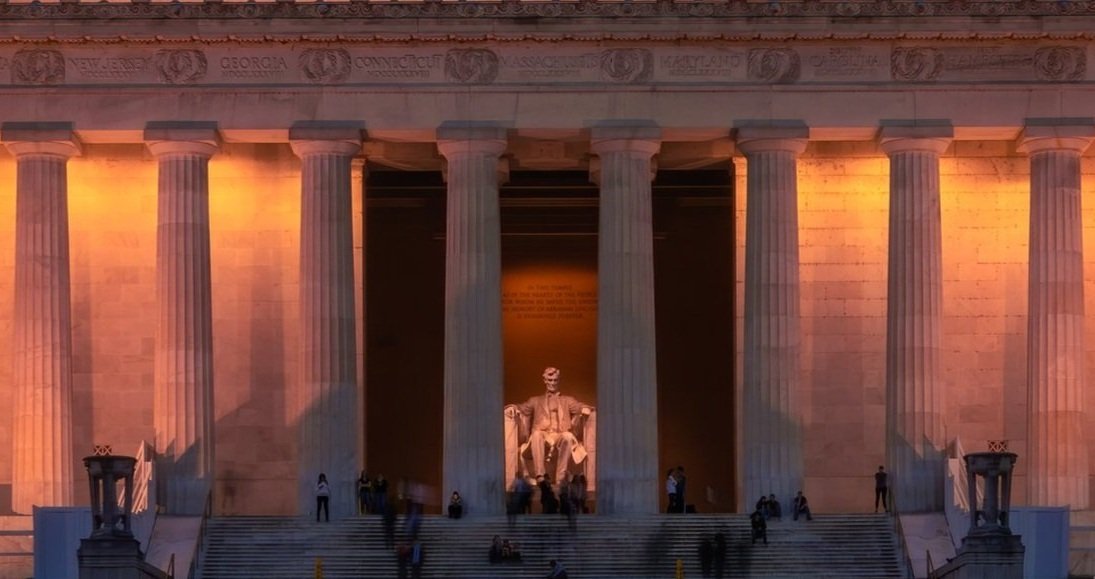Modest, well-tried, much-loved, genuine, restful, and human are, as it happens, virtual antonyms of modern architecture.
In his essay, Leigh goes on to note the roots of the preference for classical architecture in America’s early history: the inspirations from still-standing (I’ll come back to that) Greek and Roman examples, the influence of America’s first ally, France, and the values and virtues the proportion, dignity, and order of the style and its variations were meant to embody and encourage.
Nevertheless, Leigh notes, while “Architecture can have a political role—to ennoble the institutions it houses . . . it runs deeper than politics. Goethe famously referred to it as ‘frozen music.’”
Another important line of argument that Leigh develops—important in this ruthlessly and unimaginatively pragmatic age—is that of cost and return on investment.
During last year’s EO controversy, the AIA regurgitated the misleading argument that classical design “can increase the cost of a project (to up to three times as much)” in a letter to Trump. Many laypeople are taken in by this canard, but the truth is that modernism’s proclivity for abstract, unornamented surfaces and details means construction elements must be dimensioned very precisely to keep the weather out. And that is expensive. Classicism allows for greater tolerances because joints can be concealed by pilasters, belt courses, cornices, and so on. Modernist designs can also be harder to make weather-resistant because of their frequent eschewal of time-tested local usages of materials and details. “The end result when compared apples-to-apples (in terms of quality, details, and finished execution),” a gifted classical architect wrote to me not long ago, “is a modern[ist] building will be more expensive, it will have a shorter lifespan, and it will also require higher maintenance and upkeep costs.” This can and should be verified.
Modernist buildings, as Scruton, Tom Wolfe, and others have observed, do not last.
On that point, here’s the second piece that recently caught my eye. At The Critic, Andrew Hunt looks at ugly modernist buildings and their consequences—not only aesthetic and human, but environmental. Hunt:
[Modern politicians] fetishise house-building, but fail to notice that building even a two-bed house creates 80 tonnes of carbon and uses 150 tonnes of materials—the same amount of landfill as an average household creates over 300 years! By comparison, powering your house produces about 2 tonnes of CO2 per year. Even if you could build a truly net zero home tomorrow (which you can’t), it would take forty years to break even.
A big part of the problem is modern construction materials. Producing concrete (180kg of CO2/tonne) and steel (1.85tonnes of CO2/tonne!) are two of the most ubiquitous and environmentally destructive industries on the planet.
Badly designed and built of poor materials at great cost both financially and in terms of pollution and carbon output, modernist buildings are unloved and rapidly superannuate:
Pre-stressed concrete meanwhile has a lifespan of 50-100 years, meaning many of the first concrete structures have already crumbled into carcinogenic dust. . . . [B]adly built eyesores are being torn down barely a generation after their construction: tower blocks from the 60s, council offices from the 70s and shopping centres from the 90s. That’s billions of tonnes of fossil fuels and mining degradation ending up as landfill.
Hunt links the above to this article, “The problem with reinforced concrete,” and also contrasts problems with modern building materials with the styles and building materials of the past:
sandstone has a carbon footprint of just 77kg/tonne, and wood can be CO2 negative as it locks in carbon. Those old materials last longer as well. There are stone buildings that have been knocking around for more than a millennium—Rome’s Pantheon is 1900 years old. If treated properly, wooden buildings can last almost as long. The world’s oldest inhabited house in the Faroe Islands is 900 years old and built from wood. China’s ornately carved Nanchang Temple has been welcoming Buddhists since the 8th century.
And the kicker, the most striking paragraph in the essay to me, perhaps the most ironic and certainly the bitterest:
Isn’t it odd? Our ancestors built stunning buildings that were environmentally sustainable, have lasted for centuries and are admired and cherished. Almost all of them managed it—Greeks and Romans, Ottomans and Venetians, Tudors and Georgians. Yet they had none of the technology or machinery we have today. In every other sphere of life, we are thrashing our forebears. Why is construction the odd one out? And why have we accepted it for so long?
One hopes we won’t have to for much longer. But, given the vested interests—political, cultural, ideological—noted in both pieces, I’m not holding my breath.
For a gleeful mid-1970s jaunt through modern architecture that slaughters all kinds of sacred cows, starting with the vandals at Bauhaus and continuing through Le Corbusier and accomplices, read Tom Wolfe’s short book From Bauhaus to Our House sometime. In the meantime, watch Scruton’s documentary wherever you can find it, and appreciate the fitting, the settled, and the human wherever it still stands in your neighborhood.






